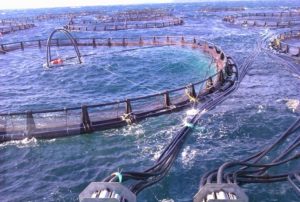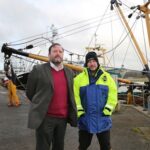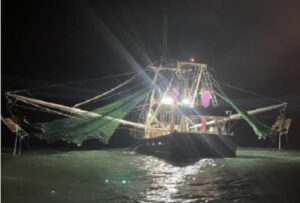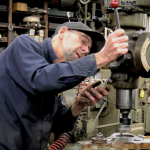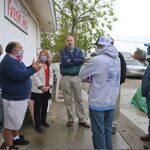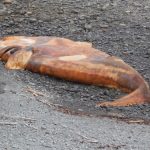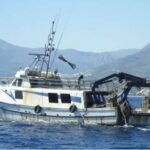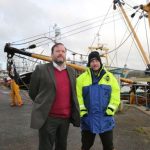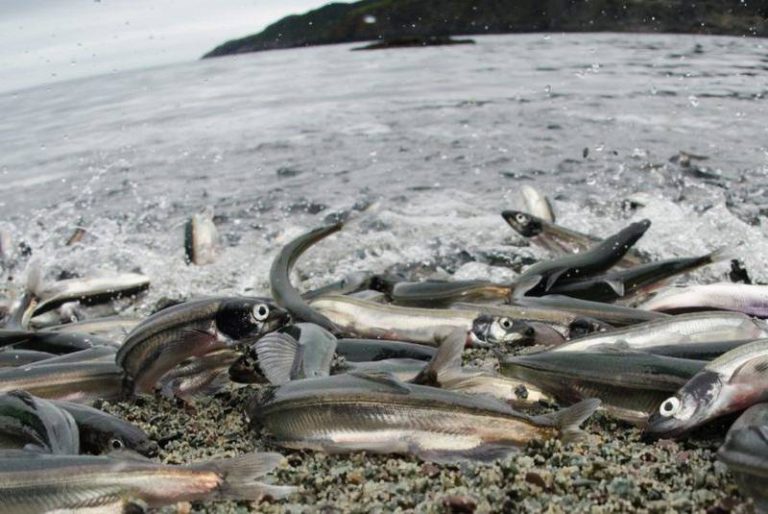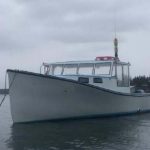Tag Archives: electronic monitoring
A Rebuttal to a Recent Commentary: Alaska trawl fisheries are vital and under attack by those using myths
 This campaign to ban trawling – a sustainable fishing method responsible for a substantial majority of fishery landings in the Alaska Region and nationally – poses a direct threat to Alaska’s coastal economy, seafood sector and way of life. If you enjoy wild seafood – fish sandwiches or shrimp; fish sticks or scallops; fish tacos or rockfish – you are enjoying seafood caught by “trawl” or “dredge” fishing gears that touch the seafloor. It’s true that these fishing methods, like every farm, aquaculture facility and fishing operation on the planet, impact the environment. But, what’s also true is that the impacts of trawl fishing in Alaska are continually monitored to ensure long-term ecosystem health. The recent commentary authored for the Alaska Beacon by Heather Sauyaq Jean Gordon and David Bayes is the latest effort to demonize sustainable trawl fisheries. Like other attacks on our sector, the commentary comes from a vocal few that play fast and loose with the facts. By Sam Wright, more, >>CLICK TO READ<< 11:43
This campaign to ban trawling – a sustainable fishing method responsible for a substantial majority of fishery landings in the Alaska Region and nationally – poses a direct threat to Alaska’s coastal economy, seafood sector and way of life. If you enjoy wild seafood – fish sandwiches or shrimp; fish sticks or scallops; fish tacos or rockfish – you are enjoying seafood caught by “trawl” or “dredge” fishing gears that touch the seafloor. It’s true that these fishing methods, like every farm, aquaculture facility and fishing operation on the planet, impact the environment. But, what’s also true is that the impacts of trawl fishing in Alaska are continually monitored to ensure long-term ecosystem health. The recent commentary authored for the Alaska Beacon by Heather Sauyaq Jean Gordon and David Bayes is the latest effort to demonize sustainable trawl fisheries. Like other attacks on our sector, the commentary comes from a vocal few that play fast and loose with the facts. By Sam Wright, more, >>CLICK TO READ<< 11:43
UK Government Launches Remote Electronic Monitoring on Fishing Vessels
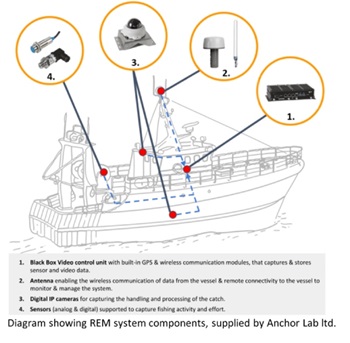 The UK Government has begun rolling out Remote Electronic Monitoring (REM) systems on fishing vessels, marking a significant step towards modernising the monitoring of fishing activities and promoting sustainability. The Department for Environment, Food and Rural Affairs (Defra), in collaboration with key partners, is implementing this technology to collect real-time data on fishing activities and catches, supporting both the industry and environmental conservation efforts. The REM system, comprising sensors and cameras, will provide data on the location and timing of fishing operations and what species are being caught. Defra’s Fisheries Act (2020) and the Joint Fisheries Statement form the legal basis for this initiative, aimed at ensuring a sustainable future for UK fisheries. more, >>CLICK TO READ<< 11:47
The UK Government has begun rolling out Remote Electronic Monitoring (REM) systems on fishing vessels, marking a significant step towards modernising the monitoring of fishing activities and promoting sustainability. The Department for Environment, Food and Rural Affairs (Defra), in collaboration with key partners, is implementing this technology to collect real-time data on fishing activities and catches, supporting both the industry and environmental conservation efforts. The REM system, comprising sensors and cameras, will provide data on the location and timing of fishing operations and what species are being caught. Defra’s Fisheries Act (2020) and the Joint Fisheries Statement form the legal basis for this initiative, aimed at ensuring a sustainable future for UK fisheries. more, >>CLICK TO READ<< 11:47
Gulf of Alaska trawl pollock vessels to be included in electronic monitoring program
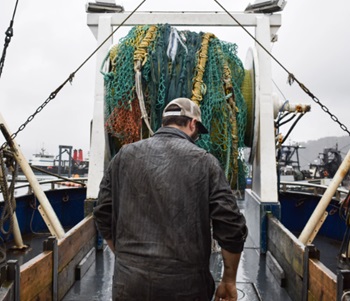 According to the 2023 annual report from the North Pacific Observer Program, the vast majority of groundfish harvest in Alaska is observed with full coverage, meaning 100% of all trips are monitored by either onboard observers or electronic monitoring. After years of testing the program, electronic monitoring will soon be expanded to include pelagic trawl pollock catcher vessels and tenders delivering to shoreside processors or stationary floating processors, across the Bering Sea and Aleutian Islands, and the Gulf of Alaska. That includes vessels that already have an observer on board. more, >>CLICK TO READ<< 07:55
According to the 2023 annual report from the North Pacific Observer Program, the vast majority of groundfish harvest in Alaska is observed with full coverage, meaning 100% of all trips are monitored by either onboard observers or electronic monitoring. After years of testing the program, electronic monitoring will soon be expanded to include pelagic trawl pollock catcher vessels and tenders delivering to shoreside processors or stationary floating processors, across the Bering Sea and Aleutian Islands, and the Gulf of Alaska. That includes vessels that already have an observer on board. more, >>CLICK TO READ<< 07:55
Shane Jones reviewing rollout of cameras on commercial fishing boats
 Fisheries Minister Shane Jones is reviewing the rollout of cameras on commercial fishing boats, saying he wants fisheries management to be “better, more focused and robust”. He said he wanted to know how it could be paid for and how the camera footage could be used as a way of enhancing management outcomes. “We don’t have government-mandated cameras in other people’s workplaces so I think we need to think very carefully as we progress down this path,” said Helson. Jones said it was important that the privacy dimensions of using camera footage are highly guarded. more, >>click to read<< 11:41
Fisheries Minister Shane Jones is reviewing the rollout of cameras on commercial fishing boats, saying he wants fisheries management to be “better, more focused and robust”. He said he wanted to know how it could be paid for and how the camera footage could be used as a way of enhancing management outcomes. “We don’t have government-mandated cameras in other people’s workplaces so I think we need to think very carefully as we progress down this path,” said Helson. Jones said it was important that the privacy dimensions of using camera footage are highly guarded. more, >>click to read<< 11:41
Pair of bills makes electronic monitoring of state-regulated fisheries a possibility
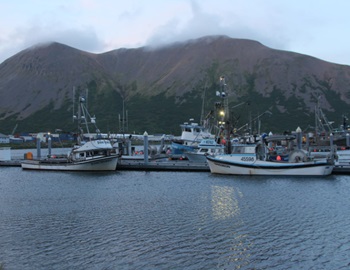 Nels Evens is a longliner and gillnetter, and the executive director of the Petersburg Vessel Owners Association. He says he’s not sure what the bills’ aim is. “Because it is so broad, and we don’t understand what it’s really trying to get at, we’re not supportive of it,” he said. The pair of bills – Senate Bill 209 and House Bill 294 – stem from a discussion at last year’s Board of Fisheries meeting. The Board was trying to figure out how to enforce regulations that require Area M fishermen to keep chum salmon, instead of tossing them back in favor of much more valuable King salmon. Area M is along the Alaska Peninsula and Eastern Aleutians. It intercepts some chum salmon bound for western Alaska. more, >>click to read<< 08:53
Nels Evens is a longliner and gillnetter, and the executive director of the Petersburg Vessel Owners Association. He says he’s not sure what the bills’ aim is. “Because it is so broad, and we don’t understand what it’s really trying to get at, we’re not supportive of it,” he said. The pair of bills – Senate Bill 209 and House Bill 294 – stem from a discussion at last year’s Board of Fisheries meeting. The Board was trying to figure out how to enforce regulations that require Area M fishermen to keep chum salmon, instead of tossing them back in favor of much more valuable King salmon. Area M is along the Alaska Peninsula and Eastern Aleutians. It intercepts some chum salmon bound for western Alaska. more, >>click to read<< 08:53
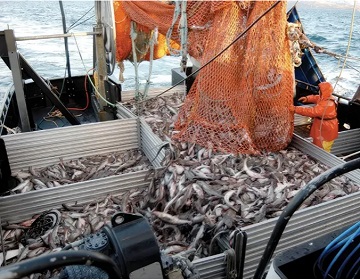
Solutions to the Bycatch Blame Game
The issue of bycatch has grown more important as some fisheries get smaller and those who depend on the fish for their livelihood or survival find that there are not enough fish to go around. This raises the question of whether bycatch is at the root of the problem or if other issues facing fisheries must be addressed. Bycatch is monitored in a combination of ways, through at-sea observers, electronic monitoring, seafood processing plant observers, logbooks, and fish tickets. “In the Bering Sea, approximately 94 percent of all catch is observed, including 99 percent of all trawl catch,” Bush explains. “In the Gulf of Alaska, 40 to 50 percent of all catch is observed across all gear types.” Photos, >click to read< 12:26
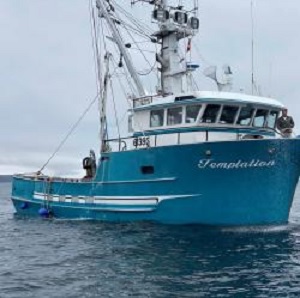
Electronic monitoring comes to Gulf of Alaska pollock fishery
Kiley Thompson knows the fishery well. He has been fishing in Alaska waters for nearly 30 years. After getting a job in college fishing for salmon, this eventually became his full-time profession. Today, he fishes along with three crew members in the Gulf of Alaska pollock fishery on F/V Decision, a 58-foot seiner/trawler based in Sand Point, Alaska. ‘The biggest challenge for us is getting observers, and you can end up losing fishing time waiting for them to arrive,’ Kiley Thompson said. In the face of these challenges, the Gulf of Alaska fleet turned to emerging electronic monitoring technologies. >click to read< 07:48
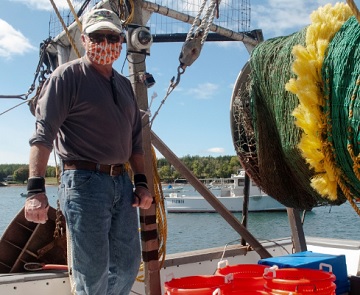
How many fish are in the sea? New rules intend to help with the count.
Regulators and fishermen hope new rules set to take effect this summer will provide a more accurate understanding of the population of some of New England’s most iconic fish, including Atlantic cod, which has seen a spectacular collapse in recent decades. The rules, adopted this spring by federal regulators, will require boats in groundfish sectors to have a human observer or a camera aboard on every groundfish trip to keep tabs on what they catch and discard. >click to read< 09:37
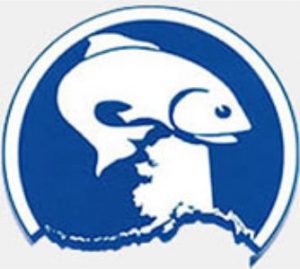
Battlefront: Salmon bycatch, electronic monitoring on the table at Sitka meeting of NPFMC
The bycatch of chinook and chum salmon is on the agenda, as the spring meeting of the North Pacific Management Council gets underway in Sitka this week (June 9-14). In addition to hearing how much salmon is being intercepted in the Gulf of Alaska and Bering Sea by the trawl fisheries, the council will review a proposal to supplement the human observer program with electronic monitoring. >click to read< Note: Find links to the Council’s agenda and meeting livestream here.

Catch-App: “Government are going to make us criminals,” fear English fishermen
English fishermen are deeply concerned that new regulations regarding the enforcement of Catch-App will turn them into criminals. Fishermen across England are deeply concerned as the Marine Management Organisation (MMO) the Government’s fishing regulator in England, sets the date of 28 February 2022 for the enforcement stage of the Catch-App which could leave them facing prosecutions they cannot avoid. Leading fisheries solicitor Andrew Oliver, partner of Hull based firm Andrew Jackson questioned the legal implications of the regulations. “This is a clear breach of human rights. It is against public law principles to create a criminal offence for which it is impossible to comply with. >click to read< 07:06
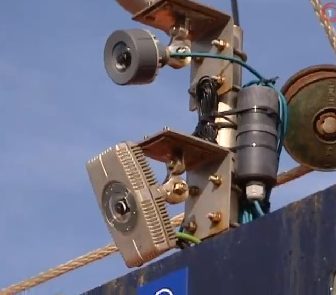
Electronic Monitoring: Hearings set for new electronic lobster boat tracking rules
An arm of the Atlantic States Marine Fisheries Commission is considering implementing the tracking requirements for lobster and Jonah crab boats that have federal permits. A Jan. 19 hearing will be held via webinar and in person at the Urban Forestry Center in Portsmouth, New Hampshire. The other hearings will be held virtually. Others are slated for mid-Atlantic states, Maine and Massachusetts and Rhode Island. >click to read< 16:15
Electronic Monitoring: Who Gets to Use Our Oceans?
Much of the current effort to create coordinated planning for use of our oceans started in 2010, when President Obama issued an executive order that called for the development of “coastal and marine spatial plans.” The idea is to figure out where to put things like aquaculture and wind farms without harming other things such as fisheries. In early August, the ASMFC announced that it’s considering a plan to require electronic tracking devices on federally permitted vessels that operate in American lobster and Jonah crab fisheries. Most of the lobster fishermen to be impacted are in Maine, and while they’ve expected the tracking plan to go into motion for some time now, Porter says, “there will be some seriously pissed-off lobstermen when this actually hits the ground.” >click to read< 09:21

Electronic Monitoring of the Lobster fishery, Tracking of the Red Shrimp fishery to be imposed
America’s lobster fishing businesses could be subjected to electronic tracking requirements to try to protect vulnerable right whales and get a better idea of the population of the valuable crustaceans. The fishery has collapsed in southern New England, however. Fishermen from New York, Connecticut and Rhode Island were once a significant part of the fishery,,, >click to read<…The American red-spotted shrimp fishery may be subject to electronic tracking requirements to protect vulnerable right whales and better understand precious crustacean populations. However, fishing has collapsed in southern New England. Fishermen in New York, Connecticut, and Rhode Island used to be an important part of the fishing industry, Starks said, but the stock of red-spotted shrimp in southern New England is now depleted. Scientists have linked the collapse of fishing in southern New England to warming seawater. >click to read< 10:50

The Last of the Port Clyde Groundfishermen – Once robust, Maine’s groundfishery is on the ropes
When Randy Cushman was growing up in Port Clyde, some 300 trawlers were moored up and down Maine’s coast,,, Today, Cushman is 59 years old and might be Maine’s most knowledgeable commercial fishermen.,, But Cushman is barely scraping by. Prices for cod, flounder, and other groundfish have all but collapsed in Maine. The combination of rock-bottom prices, the need to protect the state’s fish stocks, and a dearth of fishing infrastructure make it harder than ever to be a fisherman here. Today, the robust Maine trawler fleet of Cushman’s youth has been reduced to around 30 boats. photos, >click to read< 14:21

Electronic Monitoring in New Zealand: “not excusable” some skippers are fishing in protected areas
It comes as data obtained under the Official Information Act shows the Ministry for Primary Industries (MPI) is investigating a set netting vessel in the South Island. It alleges it fished in both a dolphin-protected area and a marine reserve. “It’s not excusable at all,” chief executive Dr Jeremy Helson says. “We will work with MPI and the companies to make sure skippers and crew understand their responsibilities.” In December last year, new electronic monitoring rules came into place for 860 commercial fishing vessels, meaning the movements of vessels were tracked by the Ministry for Primary Industries. >click to read< 09:16 – Commercial fishing vessel offences 10-times higher after Ministry for Primary Industries starts tracking location information – >click to read<
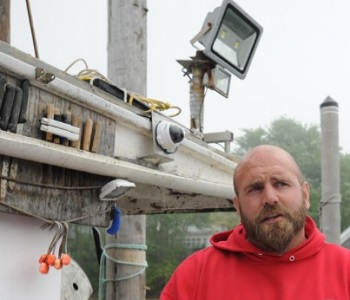
Electronic monitoring long-awaited boon for Cape Cod fishermen
Cape fishermen first started advocating for the use of electronic monitoring in 2006, said Melissa Sanderson, chief operating officer of the Cape Cod Commercial Fishermen’s Alliance. “I would say it’s a long time coming,” said Sanderson of the 14 years it took to finally have approval. But six years ago, Maine fishermen revived interest with their own pilot program and Cape fishermen joined the following year using equipment and technical support provided by The Nature Conservancy and grants from the National Fish and Wildlife Foundation. >click to read< 09:09
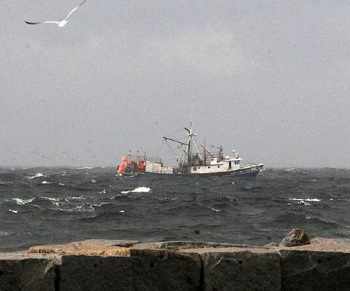
NEFMC votes to set a future target of 100% monitoring coverage on sector based groundfish vessels
The council, deliberating online via webinar on Amendment 23, overwhelmingly approved the motion for its preferred alternative of 100% coverage level for sector vessels in the Northeast Multispecies groundfish fishery. But the motion, crafted through a morning and afternoon of rulemaking on the fly, included a valuable caveat for fishermen: The region’s commercial groundfish harvesters likely won’t have to pay the full costs for the monitoring for the first four years the amendment is in effect or as long as supporting federal funds last. According to the approved measure, the commercial fishing industry will receive federal reimbursements, or money from other federal mechanisms, for 100% of their electronic monitoring costs and 100% of their at-sea monitoring costs in the first four fishing years the amendment is in effect. >click to read< 07:41
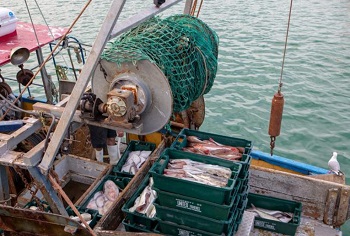
NZ First could put the brakes on the extension of cameras on more boats, depending on outcome of election
New Zealand First has long resisted cameras, but has now agreed with Labour to extend their use. But the party’s fishing spokesperson, Shane Jones, said he would be watching the process closely to make sure it did not handicap the economy. It was important to keep earnings by the primary sector strong, for the benefit of New Zealand as a whole, he said. “The installation of cameras on fishing boats needs to driven by a robust appraisal … and careful analysis of what is the business case (for them),” he said. “In this post Covid environment it is incredibly important that revenue is delivered with gusto. >click to read< 13:50

New Zealand Government to pay up to $60 million to install cameras on commercial fishing boats
Minister of Fisheries Stuart Nash has announced a large cash investment from the Government to roll out cameras on commercial fishing vessels. The cameras will be used to monitor any breach of fishing quotas by operators. Nash said the funding would make a real difference, but defended the delay in making it happen. “This isn’t simply a matter of just about getting a go-pro and a selfie stick and away you go, we’re talking about cameras that are operating in the harshest of environment, we’re talking about up to 700G of data that has to be transferred from the boat per month, from the boat to some sort of storage site, it has to be viewed. >click to read< 20:35

Fishermen, state leaders push back against at-sea monitoring proposal
The New England Fisheries Management Council (NEFMC) is considering Amendment 23 to the Northeast Multispecies Fishery Management Plan (FMP) that would require groundfishing vessels to implement 100% at-sea monitoring or a blended approach of at-sea monitoring and electronic monitoring. The proposed change seeks to improve catch accountability in the fishery, but fishermen argue this particular proposal is overly burdensome and unnecessary to achieve the stated goal,,, Overall, fishermen across Massachusetts fear this proposed policy would incur overly burdensome costs on an already struggling fleet, accelerating the expiration date of the fishery.” >click to read< 11:52
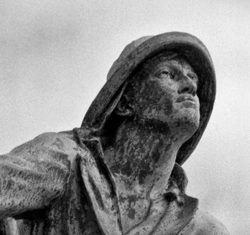
Opinion: Been a lot about the Observer Program out there lately. My question is, why are they needed?!!
When our boats come to unload their catch, NOAA people are there to report their landings, and if they caught too much haddock, cod or flounder, or other species that are not allowed, the owner could face a fine. Of course, Electronic monitoring is an alternative to that. This would show what they caught each and every tow, thus not needing an observer that many can’t afford, and second it should be a NOAA financial obligation, not placed on our fishermen. There are so few of them left. There is a lot to think about, but the bottom line is, it should be a financial obligation of the government to harvest the government required data. Thank You, Sam Parisi, Gloucester 19:15
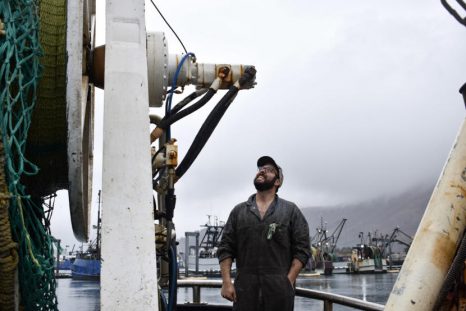
Increase in observer fees has people in the fishing industry questioning how their dollars are being spent
In Kodiak’s Dog Bay harbor Jake Everich is puttering around the galley of his trawler, the Alaskan. He bought his boat in March to fish for rockfish and pollock around the Gulf of Alaska. It’s just under 75 feet — a relatively small operation. Everich is among the fishermen affected by a recent decision from the North Pacific Fishery Management Council to increase observer fees from 1.25 to 1.65 percent of their catch value.,,, For Everich, the bigger issue is how that money is going to be used. He says the data observers collect, and sometimes observers themselves, can be unreliable. >click to read< 07:10
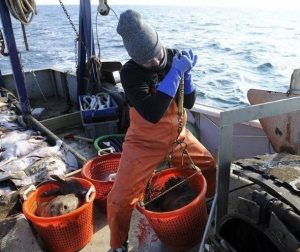
Groundfishermen not hooked by monitoring alternatives
For more than two years, the New England Fishery Management Council has worked on an intricate groundfish monitoring amendment that could have wide-scale economic and regulatory consequences for groundfishermen. It has been a thorny, winding path that involves a host of groundfish committees, plan development teams and assorted staff within the far-flung fisheries regulatory landscape. Now a group of groundfishermen are weighing in. And they are not pleased. >click to read<07:53

Complaints about ‘chalky’ halibut draw attention from international commission
After years of hearing concerns from fishermen about the prevalence of “chalky” Pacific halibut, the International Pacific Halibut Commission is planning to gather information for an investigation into it. Chalky halibut are fish that, when cut open, have a stiff, chalk-textured flesh as opposed to the normal pale and tender flesh. Chalky meat is not dangerous to humans but is not desirable and thus costs the fishermen at the dock. Dr. Josep Planas, who heads up biological research for the IPHC, noted plans to gather information about chalky halibut from stakeholders,, >click to read<16:07
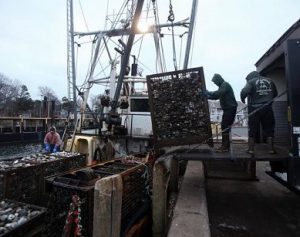
LETTER: Clam fishermen put forth proposal that protects the resource
Last week, the New England Fishery Management Council voted to kick Massachusetts surf clam fishermen off of 80 percent of our historic Nantucket Shoals fishing grounds. Our fishery in these treacherous local waters grosses $10 million per year to the dozen or so boats and their crews, and multiples more to the South Coast fishing economy. Our catch is hand-shucked for a higher value. New Bedford, Fall River, Gloucester, and Bristol, R.I. families stand to lose hundreds of jobs. While the council’s decision was based on habitat considerations, it rejected an option that would have allowed us to fish on about 80 percent of the available surf clam resource while allowing access to less than 20 percent of the overall habitat zone. >click to read<19:45
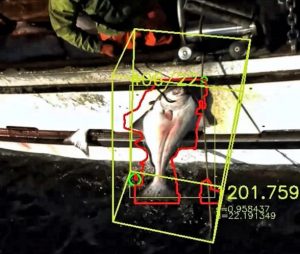
Developing Machine Vision to Collect More Timely Fisheries Data
Government scientists, academia, and fishermen are working together to develop innovative monitoring tools to identify and measure fish from digital images. This technology could revolutionize the way fisheries data are collected. Machine vision technology advances electronic monitoring systems on fishing vessels, which use cameras to collect video of commercial catches. With this technology, scientists are able to automate image analysis at sea eliminating manual data processing on land, and providing quicker access to data to make management decisions. >click to read<09:15

Govt considering ditching fishing boat camera plans
The government is considering scrapping the rollout of cameras on commercial fishing vessels altogether. Fisheries Minister Stuart Nash said many in the fishing industry were unhappy with the camera proposal and all options were on the table – including dumping it entirely. One of Mr Nash’s first moves when he became the Fisheries Minister was to put the brakes on the rollout of electronic monitoring of the commercial fishing fleet.,, “We could continue the project as it is, we could delay it – at the extreme we could dump it.” >click to read<18:44
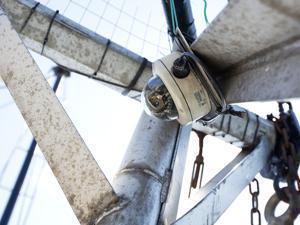
Education key to electronic reporting, monitoring systems
In a perfect world, Steve Kennelly sees the New England Fishery transitioning to electronic reporting within the next year. “There’s no reason why that group can’t be formed pretty soon,” the director of IC Independent Consulting said. The next step would be implementing electronic monitoring within 3 to 4 years. “It’s silly to talk anywhere beyond five years out” because of how fast technology continues to evolve, Kennelly said. The New England Fishery Management Council, which concluded two days of meetings on Wednesday in Portsmouth, New Hampshire, resides in an imperfect world, though. >click here to read< 18:34 
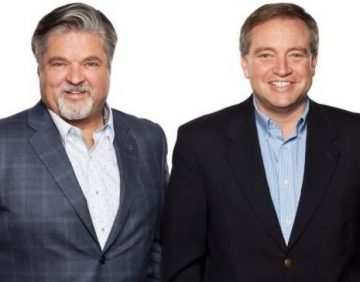
Oceantech company offers benefits for lobster industry
When Premier Stephen McNeil toured the Volta Labs startup house in Halifax last month, one company that seemed to catch his eye was SeaSmart, a new oceantech company based in Mahone Bay. Led by CEO Mark Lowe, the SeaSmart team has developed “smart lobster traps” that contain sensors to tell whether lobsters have entered the trap. The system tells fishermen, while they are still on dry land, whether there is enough product in their traps to justify going out to sea to harvest them. >click here to read<23:00
Labour to pause rollout of fish monitoring system
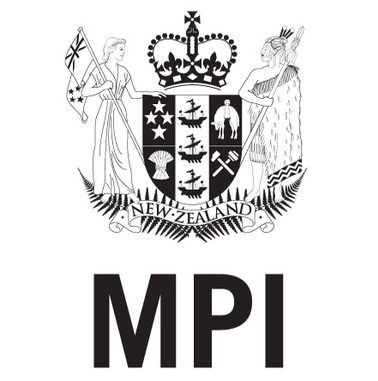 The fishing industry has got the pause it wanted to a system of electronic monitoring and reporting of fishing catches. Fisheries Minister Stuart Nash has instructed Ministry for Primary Industries officials to look at options for slowing down the implementation of IEMRS (Integrated Electronic Monitoring and Reporting System) on commercial fishing vessels.,, All commercial fishers were going to be required to use Geospatial Position Reporting and e-logbooks by April 1, 2018, and cameras by October 1, 2018. click here to read the story 09:01
The fishing industry has got the pause it wanted to a system of electronic monitoring and reporting of fishing catches. Fisheries Minister Stuart Nash has instructed Ministry for Primary Industries officials to look at options for slowing down the implementation of IEMRS (Integrated Electronic Monitoring and Reporting System) on commercial fishing vessels.,, All commercial fishers were going to be required to use Geospatial Position Reporting and e-logbooks by April 1, 2018, and cameras by October 1, 2018. click here to read the story 09:01

































